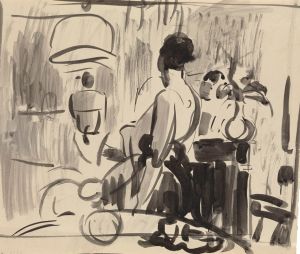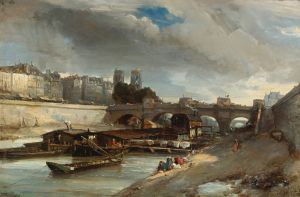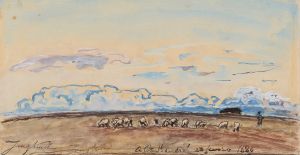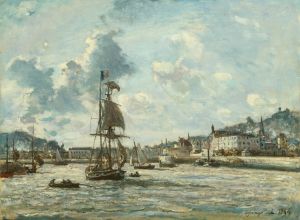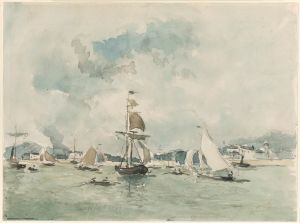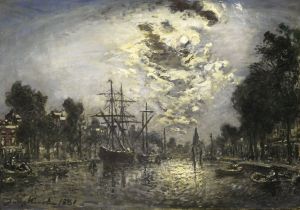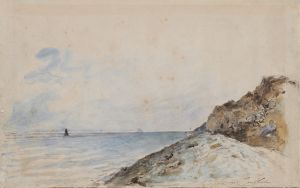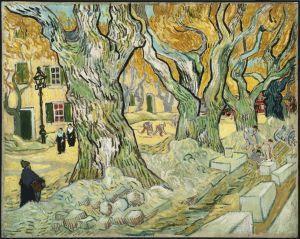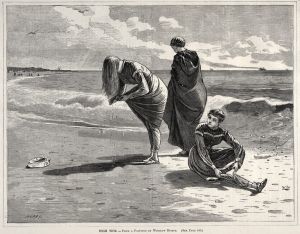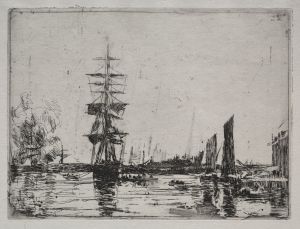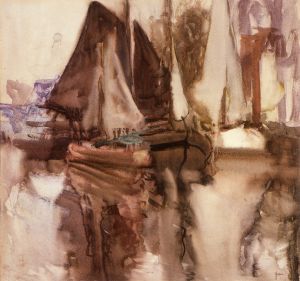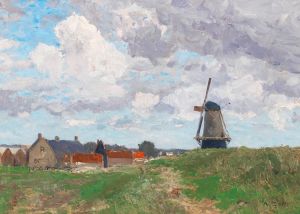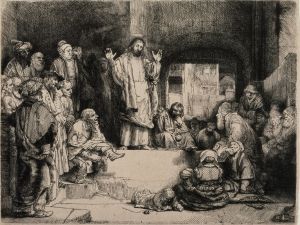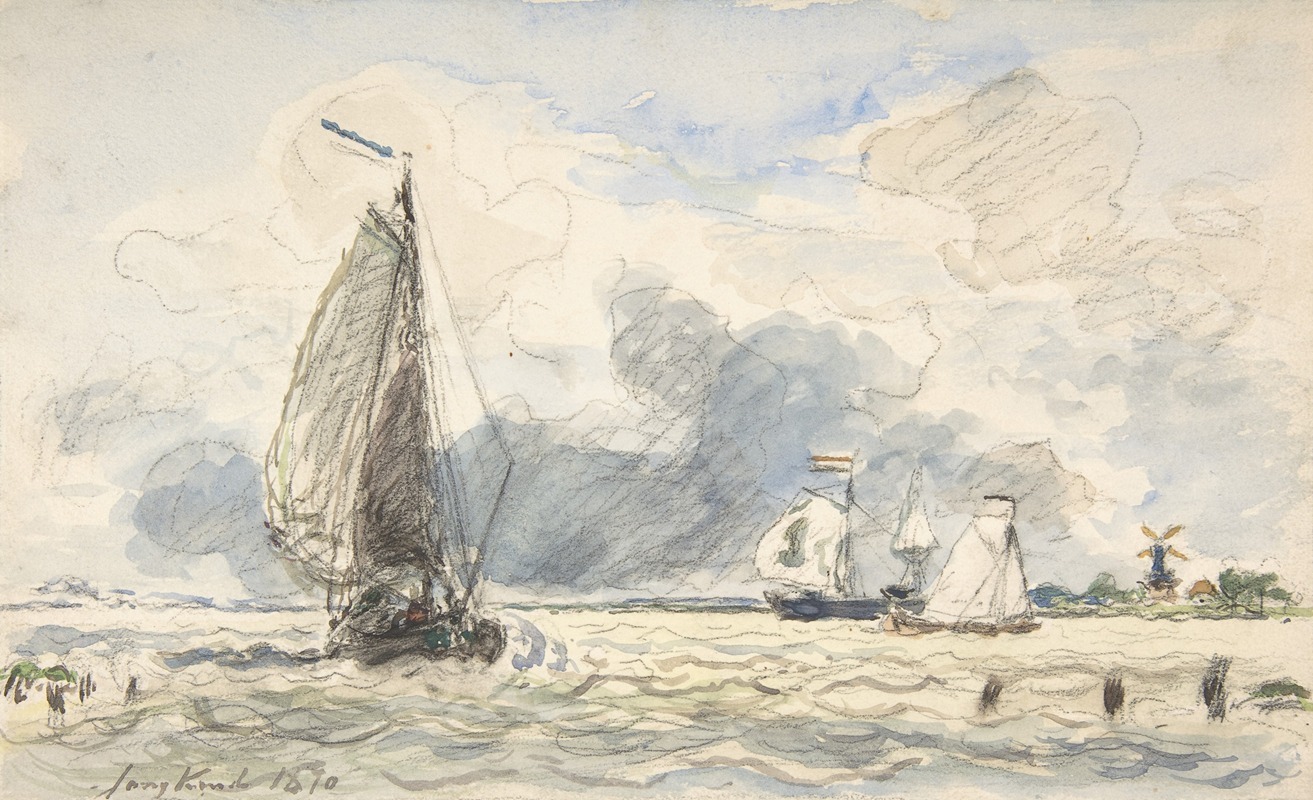
Dutch Fishing Boats
A hand-painted replica of Johan Barthold Jongkind’s masterpiece Dutch Fishing Boats, meticulously crafted by professional artists to capture the true essence of the original. Each piece is created with museum-quality canvas and rare mineral pigments, carefully painted by experienced artists with delicate brushstrokes and rich, layered colors to perfectly recreate the texture of the original artwork. Unlike machine-printed reproductions, this hand-painted version brings the painting to life, infused with the artist’s emotions and skill in every stroke. Whether for personal collection or home decoration, it instantly elevates the artistic atmosphere of any space.
"Dutch Fishing Boats" is a painting by the renowned 19th-century Dutch artist Johan Barthold Jongkind. Jongkind, born on June 3, 1819, in the Netherlands, is often celebrated for his significant contributions to the development of Impressionism. His works are characterized by their innovative use of light and atmosphere, which had a profound influence on later Impressionist painters, including Claude Monet.
Jongkind's artistic journey began in the Netherlands, where he studied at the Academy of Fine Arts in The Hague. He later moved to Paris in 1846, where he became associated with the Barbizon School, a group of artists known for their realistic and naturalistic depictions of landscapes. It was in France that Jongkind honed his skills in capturing the effects of light and weather, elements that became central to his work.
"Dutch Fishing Boats" exemplifies Jongkind's mastery in portraying maritime scenes, a subject he frequently explored throughout his career. The painting captures the essence of Dutch seafaring life, depicting fishing boats along the coast. Jongkind's technique involves loose brushwork and a keen attention to the interplay of light and shadow, which imbues the scene with a sense of immediacy and realism.
The composition of "Dutch Fishing Boats" reflects Jongkind's ability to convey movement and atmosphere. The boats are depicted with a dynamic sense of motion, as if caught in the act of navigating the waters. The sky and sea are rendered with a delicate balance of colors, capturing the transient effects of light that are characteristic of Jongkind's style. This approach not only highlights the natural beauty of the scene but also evokes the ever-changing conditions of the maritime environment.
Jongkind's work is often noted for its influence on the Impressionist movement. His innovative use of color and light prefigured many of the techniques that would later be adopted by Impressionist painters. Jongkind's ability to capture the fleeting effects of light and his emphasis on plein air painting were particularly influential. Claude Monet, who met Jongkind in the early 1860s, credited him as a significant mentor and inspiration for his own work.
Throughout his career, Jongkind remained committed to depicting the landscapes and seascapes of his native Netherlands and adopted France. His paintings often reflect a deep appreciation for the natural world and a desire to capture its ephemeral beauty. "Dutch Fishing Boats" is a testament to Jongkind's skill as a painter and his enduring legacy in the history of art.
Jongkind continued to paint until his death on February 9, 1891, in La Côte-Saint-André, France. His works are held in high regard and can be found in major museums and collections worldwide. "Dutch Fishing Boats," like many of his paintings, continues to be celebrated for its innovative approach and its role in shaping the course of modern art.





